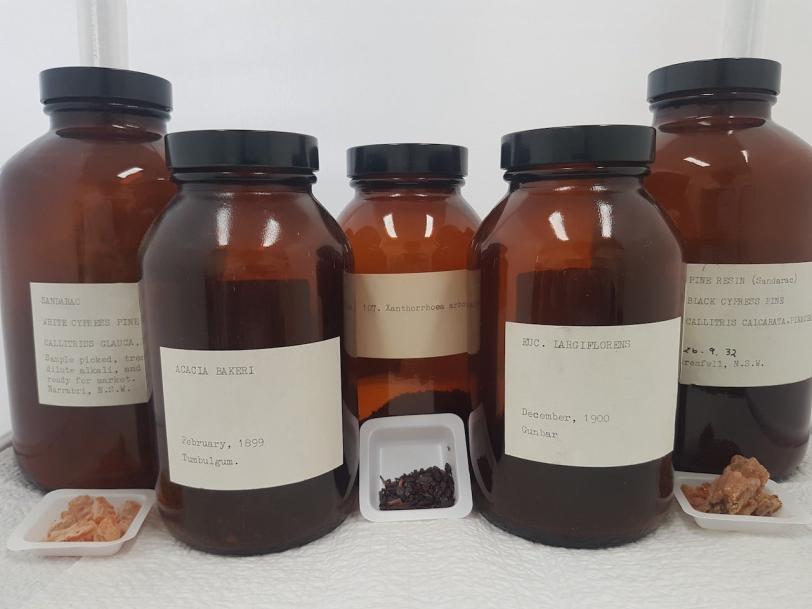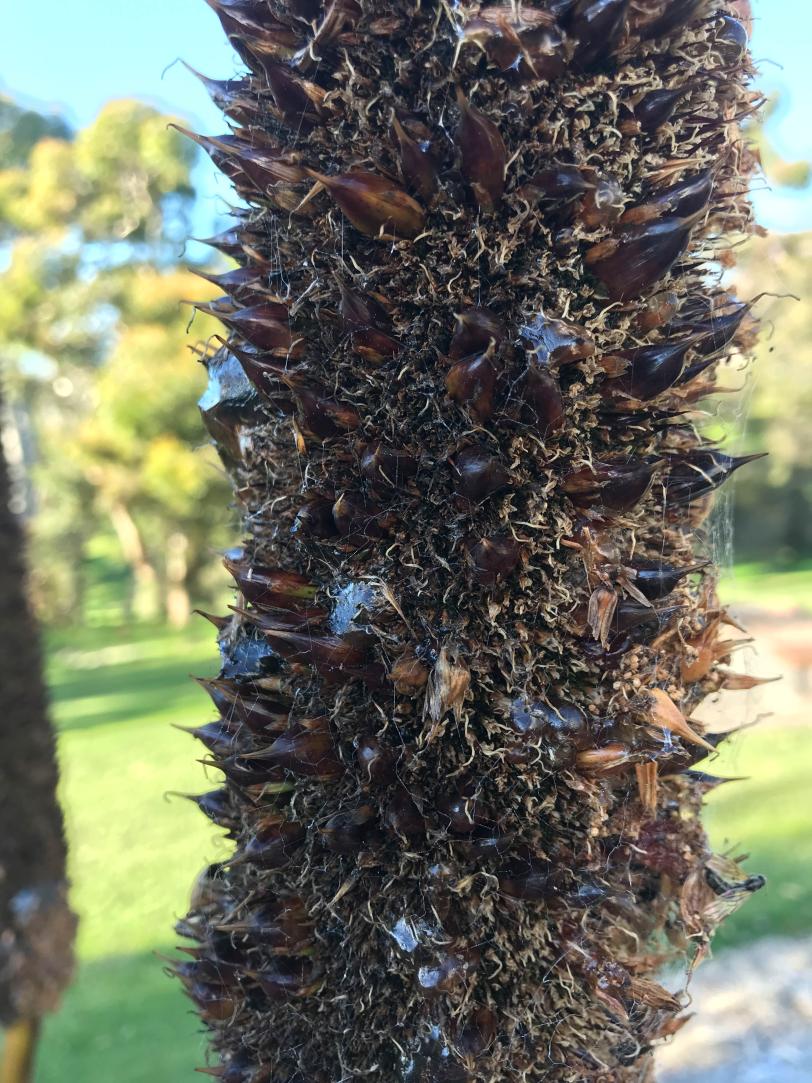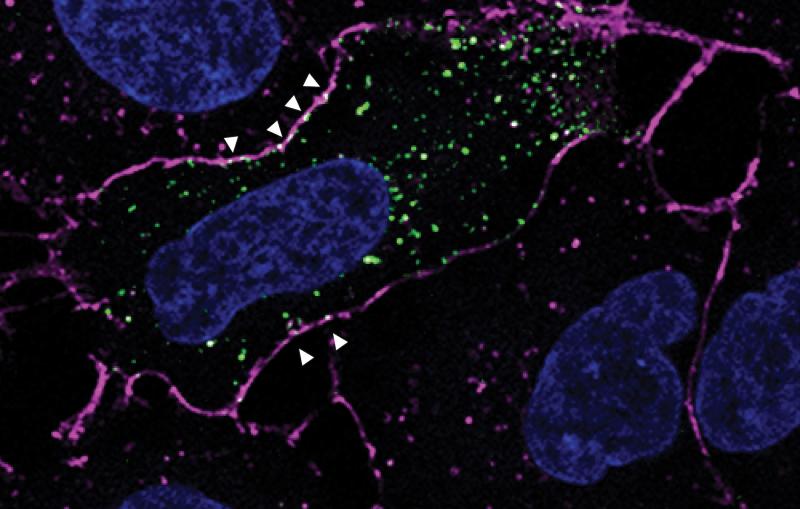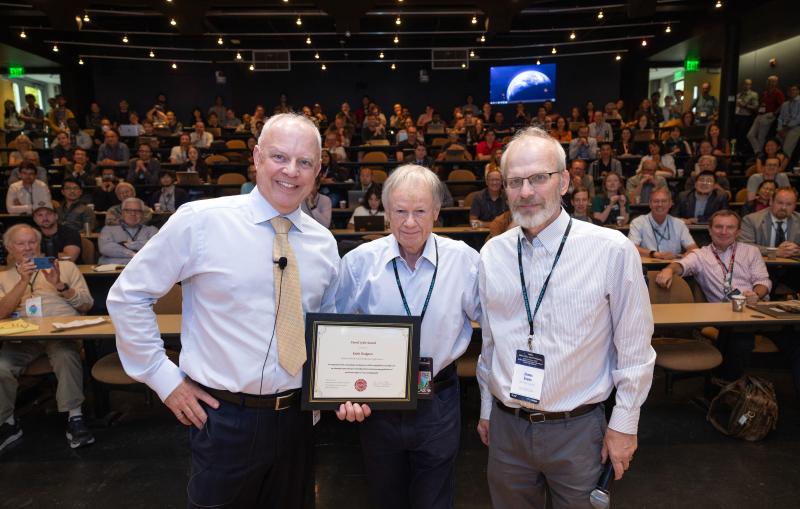Researchers aim X-rays at century-old plant secretions for insight into Aboriginal Australian cultural heritage
By revealing the chemistry of plant secretions, or exudates, these studies build a basis for better understanding and conserving art and tools made with plant materials.
By David Krause
For tens of thousands of years, Aboriginal Australians have created some of the world’s most striking artworks. Today their work continues long lines of ancestral traditions, stories of the past and connections to current cultural landscapes, which is why researchers are keen on better understanding and preserving the cultural heritage within.
In particular, knowing the chemical composition of pigments and binders that Aboriginal Australian artists employ could allow archaeological scientists and art conservators to identify these materials in important cultural heritage objects. Now, researchers are turning to X-ray science to help reveal the composition of the materials used in Aboriginal Australian cultural heritage – starting with the analysis of century-old samples of plant secretions, or exudates.
Aboriginal Australians continue to use plant exudates, such as resins and gums, to create rock and bark paintings and for practical applications, such as hafting stone points to handles. But just what these plant materials are made of is not well known.

Therefore, scientists from six universities and laboratories around the world turned to high-energy X-rays at the Stanford Synchrotron Radiation Lightsource (SSRL) at the Department of Energy’s SLAC National Accelerator Laboratory and the synchrotron SOLEIL in France. The team aimed X-rays at 10 well-preserved plant exudate samples from the native Australian genera Eucalyptus, Callitris, Xanthorrhoea and Acacia. The samples had been collected more than a century ago and held in various institutions in South Australia.
The results of their study were clearer and more profound than expected.
“We got the breakthrough data we had hoped for,” said Uwe Bergmann, physicist at University of Wisconsin-Madison and former SLAC scientist who develops new X-ray methods. “For the first time, we were able to see the molecular structure of a well-preserved collection of native Australian plant samples, which might allow us to discover their existence in other important cultural heritage objects.”
Researchers today published their results in the Proceedings of the National Academy of Sciences.
Looking below the surface
Over time, the surface of plant exudates can change as the materials age. Even if these changes are just nanometers thick, they can still block the view underneath.
“We had to see into the bulk of the material beneath this top layer or we’d have no new information about the plant exudates,” SSRL Lead Scientist Dimosthenis Sokaras said.
Conventionally, molecules with carbon and oxygen are studied with lower-energy, so-called “soft” X-rays, that would not be able to penetrate through the debris layer. For this study, researchers sent high-energy X-ray photons, called “hard” X-rays, into the sample. The photons squeezed past foggy top layers and into the sample’s elemental arrangements beneath. Hard X-rays don’t get stuck in the surface, whereas soft X-rays do, Sokaras said.

Once inside, the high-energy photons scattered off of the plant exudate’s elements and were captured by a large array of perfectly aligned, silicon crystals at SSRL. The crystals filtered out only the scattered X-rays of one specific wavelength and funneled them into a small detector, kind of like how a kitchen sink funnels water drops down its drain.
Next, the team matched the wavelength difference between the incident and scattered photons to the energy levels of a plant exudate’s carbon and oxygen, providing the detailed molecular information about the unique Australian samples.
A path for the future
Understanding the chemistries of each plant exudate will allow for a better understanding of identification and conservation approaches of Aboriginal Australian art and tools, Rafaella Georgiou, a physicist at the University of Paris-Saclay and Synchrotron SOLEIL, said.
“Now we can go ahead and study other organic materials of cultural importance using this powerful X-ray technique,” she said.
Researchers hope that people who work in cultural heritage analysis will see this powerful synchrotron radiation technique as a valuable method for determining the chemistries of their samples.
“We want to reach out to that scientific community and say, ‘Look, if you want to learn something about your cultural heritage samples, you can come to synchrotrons like SSRL,’” Bergmann said.
SSRL is a DOE Office of Science user facility. In addition to SSRL, parts of this research were carried out at SOLEIL in France and three laboratories of the French National Centre for Scientific Research (PPSM, IPANEMA, IMPMC). The University of Pisa, the Université Paris-Saclay, the University of Melbourne, Flinders University, the Australian Synchrotron International Synchrotron Access Program, and other organizations also supported this research.
Citation: Georgiou et al., PNAS, 26 May 2022 (https://www.pnas.org/doi/suppl/10.1073/pnas.2116021119)
For questions or comments, contact the SLAC Office of Communications at communications@slac.stanford.edu.
SLAC is a vibrant multiprogram laboratory that explores how the universe works at the biggest, smallest and fastest scales and invents powerful tools used by scientists around the globe. With research spanning particle physics, astrophysics and cosmology, materials, chemistry, bio- and energy sciences and scientific computing, we help solve real-world problems and advance the interests of the nation.
SLAC is operated by Stanford University for the U.S. Department of Energy’s Office of Science. The Office of Science is the single largest supporter of basic research in the physical sciences in the United States and is working to address some of the most pressing challenges of our time.




